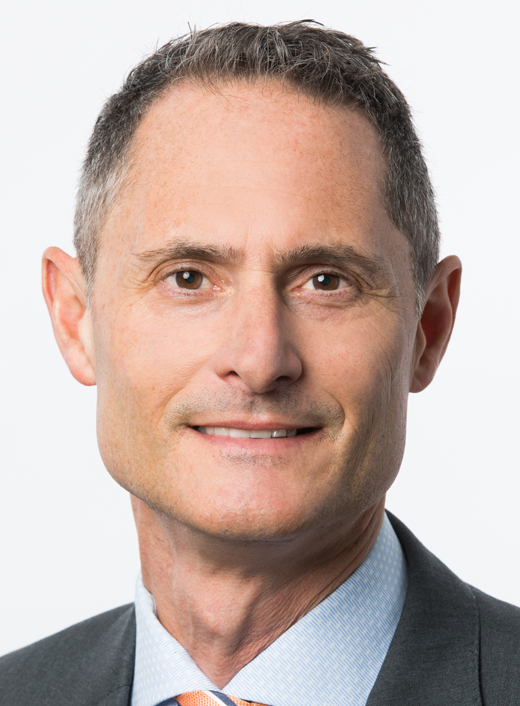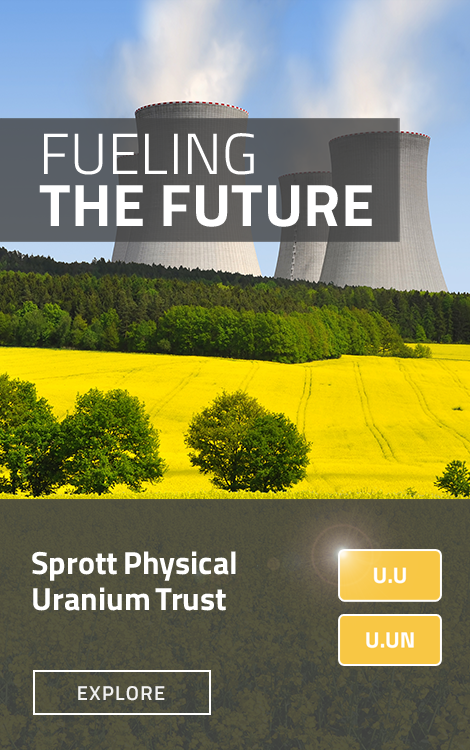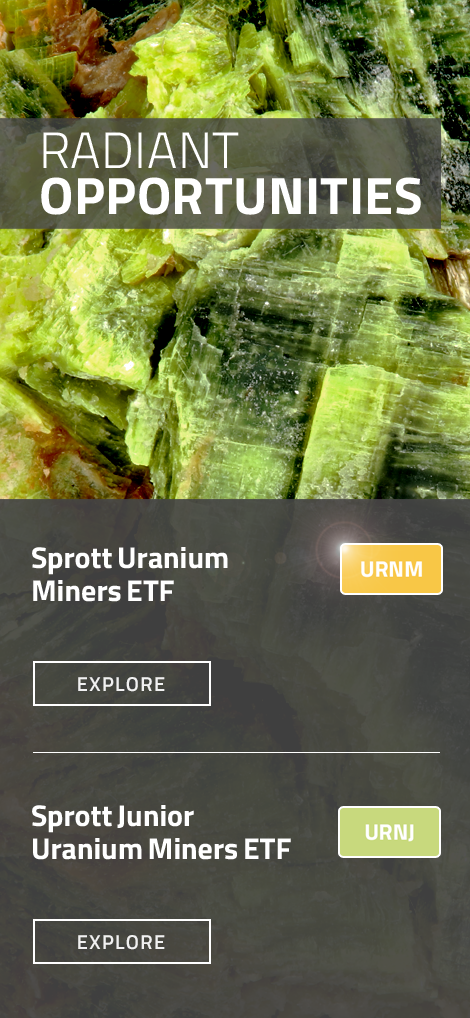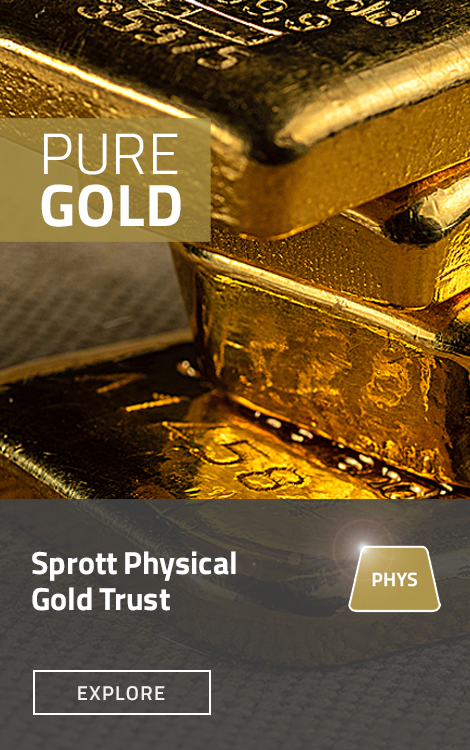September 22, 2025 | (8mins 00 secs)
John Ciampaglia, CEO of Sprott Asset Management, joins Jimmy Connor of Bloor Street Capital at the World Nuclear Symposium 2025. Ciampaglia highlights strong global investor interest in uranium, with both specialist and generalist funds viewing nuclear as a long-term growth story. He notes stabilizing uranium prices, lingering supply challenges and growing demand from utilities, AI and data centers.
Watch more Bloor Street Capital videos on Youtube.com/@BloorStreetCapital.
Video Transcript
James Connor: John, thank you for joining us today. You and your team are meeting with investors in London. I'm curious how these meetings are going, and maybe you can also give us some color on the type of funds you're meeting with.
John Ciampaglia: We've been booked solid, which is a good sign that investor interest remains very high. We've had meetings across the gamut of specialist funds that have been involved in uranium for several years, to a number of new generalist funds that we're talking to. As I often say, many are still in the early stages of their research. They view this as a megatrend, a long-term secular play, and they continue working on uranium and the whole nuclear fuel supply chain. I've had a lot of interesting meetings over the last couple of days.
James Connor: In terms of jurisdiction, are they Americans, Europeans or Asians?
John Ciampaglia: It's a real global trend because uranium is a global trend. Except for a few outlier countries, I think the world is really pivoting back to nuclear energy as a solution to meet several really important needs. Obviously, energy security, national security and climate change-driven objectives are all, I think, taking center stage in terms of why they're pivoting back to this technology. Obviously, a more emerging theme is grid stability.
We saw grid failures in Spain over the last couple of months. People are looking for baseload power, AI, and data centers, which are a huge part of this story. These hyperscalers are consuming huge amounts of electricity. I think the utilities here are feeling very good about demand for their electricity, and electricity prices remain very high. That's a good environment for these companies to make long-term investments.
James Connor: When you meet with these funds, especially the generalists, what questions do they ask you?
John Ciampaglia: They're trying to understand all the parts of the supply chain, everything from uranium mining to uranium fuel processing, to all the companies involved in manufacturing and building power stations. Obviously, there are a lot of new emerging technologies that people are trying to assess to see which ones will be in that race to develop small modular reactors, microreactors, et cetera.
James Connor: I was speaking with somebody earlier. They were sitting in on numerous meetings, and one of the things they pointed out to me was that while everyone's talking about nuclear energy, very few people are talking about uranium.
John Ciampaglia: I agree with that assessment. There's been a shift, I would say, from two years ago, when we were here, when it was all about the fuel, and now it's gone down market, which is good. Because if you want to have more uranium demand and stronger prices, you need to build more capacity downstream. I agree that the focus has shifted to the interest in building new capacity at the power station level, ultimately leading to more uranium demand.
James Connor: Last year, I’m sure you’d agree, was marked by frustration, and we saw a big pullback in the spot price. 2025 is a little bit different. It feels like it's stabilizing and maybe consolidating. Maybe you can give us some color on what's happening or your assessment of what's happening within the spot market.
John Ciampaglia: I think it's fair to say this was a very unusual year. The incoming Trump administration brought on a lot of that. Uncertainty was the theme with respect to energy policy, the Inflation Reduction Act, tariffs, trade relations and the war in Ukraine. All those things were big obstacles and created a lot of uncertainty for market participants and investors when making decisions.
I think a lot of that has cleared. We saw the market bottom in April, followed by a strong V-shaped recovery in stock prices.
The price of uranium has risen from a low of $63 to the mid-$70s, and it seems that based on investor sentiment, the price wants to grind higher. There is a growing realization that supply challenges, even among some of the biggest and best miners, are real.
James Connor: I have to ask you about gold now. Your largest physical trust is the Sprott Physical Gold Trust. Gold had a great 2024, and it was up 25%. We have three or four months left in the year, but gold is up 30% plus. Maybe you can tell us about some of the flows in the various Sprott products.
John Ciampaglia: It's been a huge win for our clients. Last year and this year, the Sprott Physical Gold Trust is well through US$12 billion. I remember you and I sat down at the beginning of the year, and we were talking about the Sprott Physical Gold Trust, and I said we were really disappointed last year, not in the performance, but in how much capital we had raised, which was about $350 million. I said investors were just not paying attention. Now the fund is up another 30% or so, and the money is finally starting to come in.
We want to take advantage of the price action and add more to our vaults. We've been very active on that fund. More recently, silver has come back to life and is at a 10-year high. It seems poised to break past the 2011 high of $50 an ounce. We're feeling pretty good about uranium, gold, silver and platinum at Sprott, and we've been very active in all those metals.
James Connor: One of the things I really enjoy about Sprott is the wealth of information you have on your website. Maybe you can talk about that.
John Ciampaglia: We want to be the experts for all kinds of investors, whether you're a do-it-yourself investor or a very sophisticated institution. We want to make ourselves and our team of experts available and share our insights. I probably spend the vast majority of my time on investor education in one way or another. You're a big part of helping us get our message across, so we really appreciate that.
But it's important because many investors, and it doesn't matter who you are, have not participated in a lot of these metal markets for the last 10 years. It's a process of education and research. Where do I get information? I need to make an informed, educated decision. We really want to help people through that journey.
James Connor: If somebody is interested in checking out the Sprott website, where can they go?
John Ciampaglia: Go to our Insights tab, and we also have an Education tab. We write some great insights and reports on precious metals, uranium and critical materials every month. Our podcasts are hugely popular. We have many in-house experts and outside guests that we bring in to help educate investors about these different categories. That's a good starting point.
James Connor: You and your team are always great at innovating and creating new products. Can we expect anything in the near future?
John Ciampaglia: We've been pretty active in the last few months and are pretty excited about a few products we've launched.
James Connor: John, this was a great update. Thank you very much for spending time with us today. Good luck with your meetings.
John Ciampaglia: Thanks very much.
Investment Risks and Important Disclosure
The Sprott Physical Gold Trust is generally exposed to multiple risks that have been both identified and described in the Prospectus. Please refer to the Prospectus for a description of these risks. This material must be preceded or accompanied by a prospectus. For an additional copy of the prospectus please visit the PHYS prospectus.
Relative to other sectors, precious metals and natural resources investments have higher headline risk and are more sensitive to changes in economic data, political or regulatory events, and underlying commodity price fluctuations. Risks related to extraction, storage and liquidity should also be considered.
Gold and precious metals are referred to with terms of art like "store of value," "safe haven" and "safe asset." These terms should not be construed to guarantee any form of investment safety. While “safe” assets like gold, Treasuries, money market funds and cash generally do not carry a high risk of loss relative to other asset classes, any asset may lose value, which may involve the complete loss of invested principal.
Past performance is no guarantee of future results. You cannot invest directly in an index. Investments, commentary and opinions are unique and may not be reflective of any other Sprott entity or affiliate. Forward looking language should not be construed as predictive. While third-party sources are believed to be reliable, Sprott makes no guarantee as to their accuracy or timeliness. This information does not constitute an offer or solicitation and may not be relied upon or considered to be the rendering of tax, legal, accounting or professional advice.




